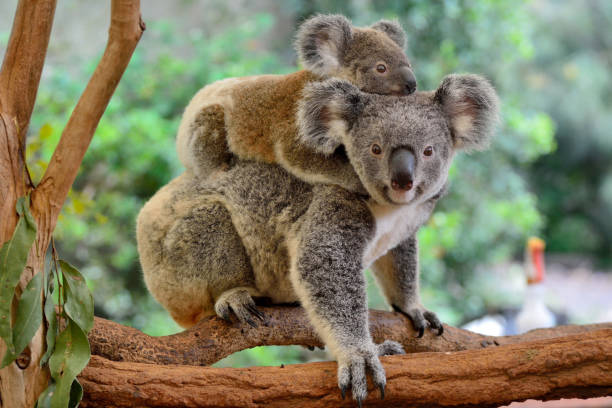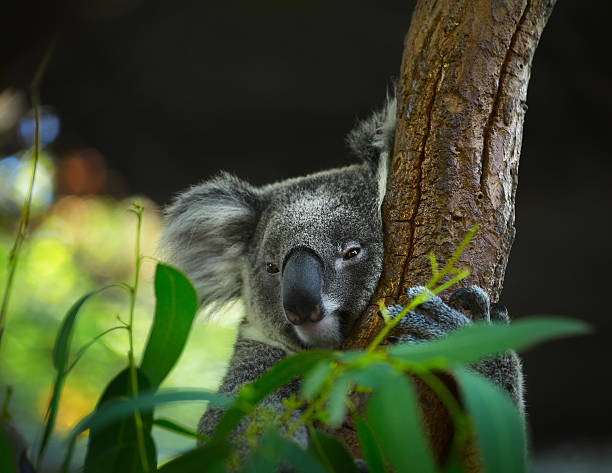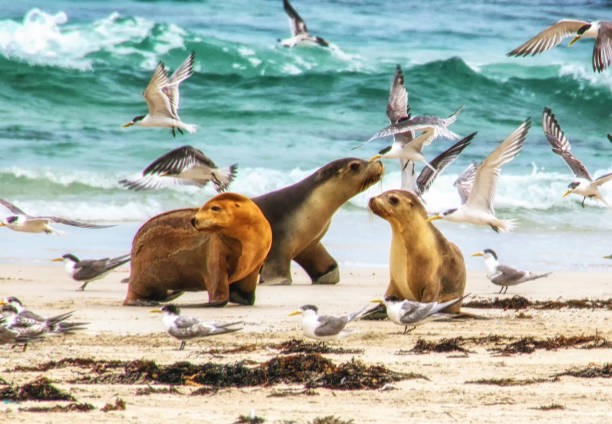Australia is a haven for nature lovers, boasting some of the world’s most extraordinary and unique wildlife. Think kangaroos bounding across open plains, koalas dozing in eucalyptus trees, and platypuses gliding silently through tranquil creeks. Whether you’re planning your first visit or a return adventure, witnessing Australia’s native animals in their natural habitats is a bucket-list experience.
This comprehensive 2025 guide reveals the best destinations across the country to see kangaroos, koalas, and other iconic Australian creatures, from world-renowned national parks to lesser-known local gems.

1. Kangaroo Island, South Australia
What You’ll See: Kangaroos, koalas, echidnas, wallabies, sea lions, possums
Why Go: Just off the coast of South Australia, Kangaroo Island is a biodiverse wonderland. Nearly a third of the island is protected parkland, offering some of the best opportunities to see kangaroos and koalas in the wild.
Top Wildlife Spots:
- Flinders Chase National Park
- Seal Bay Conservation Park
- Hanson Bay Wildlife Sanctuary
Bonus Tip: Visit at dawn or dusk when animals are most active.
2. Lone Pine Koala Sanctuary, Brisbane, Queensland
What You’ll See: Koalas, kangaroos, wombats, emus, Tasmanian devils
Why Go: The world’s first and largest koala sanctuary, Lone Pine allows visitors to hold koalas, feed kangaroos, and learn about native species in a highly educational and ethical setting.
Must-Do Activities:
- Hand-feed kangaroos
- Take a koala photo
- Attend educational wildlife shows
Best For: Families and close-up encounters in a safe, conservation-focused environment.

3. Great Otway National Park, Victoria
What You’ll See: Wild koalas, kangaroos, glow worms, lyrebirds
Why Go: One of the best places to see koalas in the wild, this lush rainforest region along the Great Ocean Road provides prime viewing conditions.
Top Spots:
- Kennett River Koala Walk
- Maits Rest Rainforest Trail
Travel Tip: Bring binoculars and look up high into eucalyptus trees.
4. Murramarang National Park, New South Wales
What You’ll See: Eastern grey kangaroos, wallabies, parrots, goannas
Why Go: Famous for its beach-dwelling kangaroos, this park is one of the rare places where you can literally sunbathe alongside wild roos.
Top Wildlife Beaches:
- Pebbly Beach
- Depot Beach
Best Time: Morning or sunset for peak kangaroo activity.
5. Currumbin Wildlife Sanctuary, Gold Coast, Queensland
What You’ll See: Koalas, kangaroos, lorikeets, crocodiles, reptiles, cassowaries
Why Go: An interactive experience for all ages, Currumbin combines wildlife education, close encounters, and Aboriginal cultural performances in a lush setting.
Top Attractions:
- Free-flight bird shows
- Wildlife hospital tours
- TreeTop Challenge adventure park
Insider Tip: Time your visit with the daily lorikeet feeding for a colorful spectacle.
6. Bonorong Wildlife Sanctuary, Tasmania
What You’ll See: Tasmanian devils, wombats, kangaroos, quolls, sugar gliders
Why Go: Bonorong is more than a sanctuary—it’s a rescue center where all admissions support wildlife rehabilitation. Located near Hobart, it offers close encounters with some of Australia’s rarest marsupials.
Standout Features:
- Tasmanian devil feedings
- Guided night tours
- Open kangaroo paddocks
Best For: Ethical travelers and conservation enthusiasts.
7. Yanchep National Park, Western Australia
What You’ll See: Koalas, kangaroos, cockatoos, swamp hens, bats
Why Go: An easy day trip from Perth, Yanchep offers a compact but rich nature experience, with a dedicated koala boardwalk and plenty of roaming kangaroos.
Top Things to Do:
- Cave tours (Crystal Cave)
- Aboriginal cultural experiences
- Picnic by Loch McNess
Photography Tip: Capture kangaroos grazing against dramatic native backdrops.

8. Tidbinbilla Nature Reserve, Canberra, ACT
What You’ll See: Emus, wallabies, platypuses, koalas, echidnas
Why Go: Just outside Australia’s capital, Tidbinbilla is a hidden gem with walking trails, wetlands, and bushland filled with wildlife.
Top Trails:
- Sanctuary Loop (platypus sightings!)
- Koala Path
- Gibraltar Peak hike
Best Time: Early morning or late afternoon for animal activity.

9. Cradle Mountain-Lake St Clair National Park, Tasmania
What You’ll See: Wombats, echidnas, Tasmanian devils, pademelons
Why Go: This alpine paradise is part of the Tasmanian Wilderness World Heritage Area and one of the best places to see wombats and wallabies up close.
Top Activities:
- Dove Lake Circuit walk
- Night wildlife tours
- Stay in eco-lodges or cabins for early animal sightings
Pro Tip: Wombats are often seen waddling through the bushland and meadows near dusk.
10. Kakadu National Park, Northern Territory
What You’ll See: Saltwater crocodiles, wallabies, dingoes, jabirus, snakes, goannas
Why Go: Kakadu is one of Australia’s most iconic national parks, known for its rich Aboriginal history and vast landscapes teeming with life.
Wildlife Experiences:
- Yellow Water Billabong cruise (for crocs and birds)
- Aboriginal-guided tours
- Birdwatching (especially in the dry season)
Warning: Always respect crocodile safety signs—never swim unless it’s a designated safe zone.
Extra Places to Spot Australian Wildlife
• Tower Hill Wildlife Reserve (Victoria):
Set in an extinct volcano, this reserve near Warrnambool is great for spotting emus, kangaroos, and koalas.
• Magnetic Island (Queensland):
Follow the Forts Walk trail for a good chance of spotting wild koalas.
• Wilsons Promontory (Victoria):
Hikes and coastal trails offer regular sightings of wombats, kangaroos, and echidnas.
Wildlife Watching Tips for a Safe & Ethical Experience
- Respect Boundaries: Don’t touch or feed wild animals.
- Be Quiet: Sudden noises can scare wildlife away.
- Use Zoom, Not Hands: A camera with a zoom lens is the best way to capture wildlife up close.
- Avoid Flash Photography: It can disturb or disorient animals.
- Travel with Guides: Guided tours often increase your chances of spotting rare species.
- Support Ethical Sanctuaries: Choose places focused on conservation and rehabilitation.
Conclusion: Embrace Australia’s Wild Side in 2025
Australia’s native wildlife is as unique as its landscapes—from koalas clinging to eucalyptus branches to kangaroos hopping across red earth. Whether you’re seeking out hidden sanctuaries or adventuring through national parks, the encounters you’ll have here will stick with you for a lifetime.
So grab your binoculars, lace up your boots, and get ready to experience the awe-inspiring wildlife of Australia in the most unforgettable way.
Start planning your 2025 wildlife adventure—Australia is calling!
